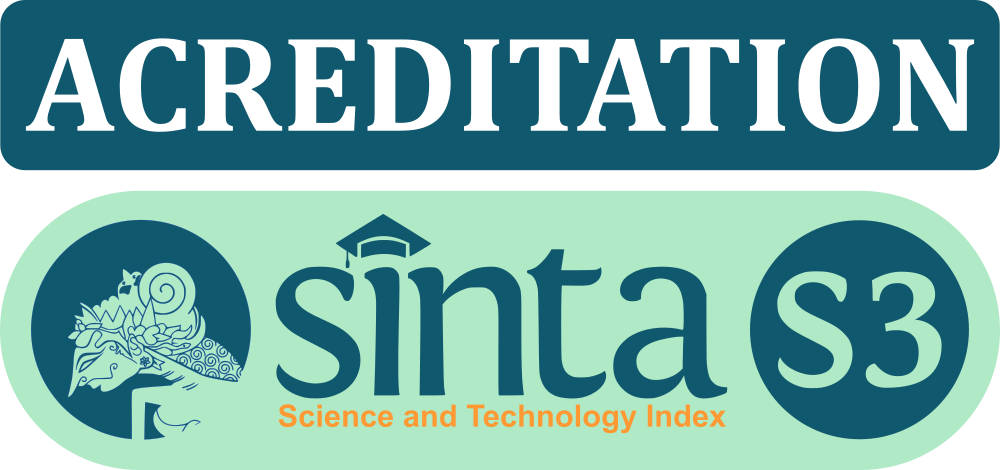Propulsion System Design For The Indonesian Semi High Speed Train
DOI:
https://doi.org/10.29122/mipi.v13i3.3851Abstract
This paper describes a study on the development of methodology to select the most appropriate technology, and the most optimum design and configuration for the propulsion system of the semi-high speed intercity train that will be operated on the Jakarta-Surabaya corridor. It also describes the method to calculate resistance loads  and tractive forces and hence the power required to propel the train along the specified route within targeted time. Among the output of this study is a recommendation for the most optimum propulsion system with basic/ main parameters for main components such as diesel engine, traction motor and the possibility of Diesel Electric Multiple Unit (DEMU) Hybrid battery system.
References
Smith RA. Railway Technology––The Last 50 Years and Future Prospects. Japan Railw Transp Rev. 2001;27(june 2001):16-24.
Menilik Perkembangan Kereta Api Indonesia dari Masa ke Masa. http://www.tribunnews.com/travel/2018/03/09/menilik-perkembangan-kereta-api-indonesia-dari-masa-ke-masa. Accessed February 11, 2011.
Hegazi M. The Assessment of On-Board Clean Hybrid Energy Storage Systems For Railway Locomotives and Multiple Units. 2016;(October).
Direktorat Jenderal-Perkeretaapian-Kemenhub. Rencana Induk Perkeretaapian Nasional.; 2011.
Direktorat Jenderal Industri Logam K. Peran Kementerian Perindustrian Dalam Pengembangan Industri Perkeretaapian.; 2018.
BPPT, JTB N. Platform Pengembangan Industri Perkeretaapian Nasional.; 2018.
INKA. LOCAL INDONESIAN INDUSTRIES Semi High Speed Train. 2019.
Direktorat Jenderal Perkeretaapian Kemenhub. Buku 3 Laporan Akhir PRA STUDI KELAYAKAN PENINGKATAN KECEPATAN KERETA API KORIDOR JAKARTA - SURABAYA.; 2017.
Jain MK. Train, Grade, Curve and Acceleration Resistance. Rail Electrica. https://www.railelectrica.com/traction-mechanics/train-grade-curve-and-acceleration-resistance-2/. Published 2013. Accessed September 14, 2019.
Szanto F. Broc. In: Conference on Railway Excellence. Melborne: RTSA; 2016.
Sjokvist EH. Worldwide Development of Propulsion Systems for High-Speed Trains. Transp Res Rec. 1988;(1177):54-83.
Rochard BP, Schmid F. Proceedings of the Institution of Mechanical Engineers , Part F : Journal of Rail and Rapid Transit A review of methods to measure and calculate train resistances. Proc Inst Mech Eng. 2000;214 part F:185-199. doi:10.1243/0954409001531306
MTU. Rail Power Packs with 12V 1600 For Railcar Applications. 2010.
Shalahuddin L, Suksmono A. Speed Profile Calculation and Analysis for the Jakarta-Surabaya Semi-High speed Train. (under Prep. 2019.
Tolliver D, Lu P, Benson D. Analysis of Railroad Energy Efficiency in the United States. Fargo, North Dakota; 2013. https://www.ugpti.org/resources/reports/downloads/mpc13-250.pdf.
JONG J-C, Chang E-F. MODELS FOR ESTIMATING ENERGY CONSUMPTION OF ELECTRIC TRAINS. J East Asia Soc Transp Stud. 2005;6:278-291.
Cosic A. Hybrid Locomotive.; 2014.
Hillmansen S, Roberts C, Mcgordon A, Jennings P. Draft Final Report : DMU Hybrid Concept Evaluation - Follow on Work DfTRG / 0078 / 2007.; 2009.
Downloads
Published
How to Cite
Issue
Section
License

This work is licensed under a Creative Commons Attribution-ShareAlike 4.0 International License.
Open Access Policy
MIPI provides immediate open access to its content on the principle that making research freely available to the public supports a greater global exchange of knowledge.
MIPI by BRIN is licensed under a Creative Commons Attribution-NonCommercial-ShareAlike 4.0 International License. Permissions beyond the scope of this license may be available at http://ejurnal.bppt.go.id/index.php/MIPI


















